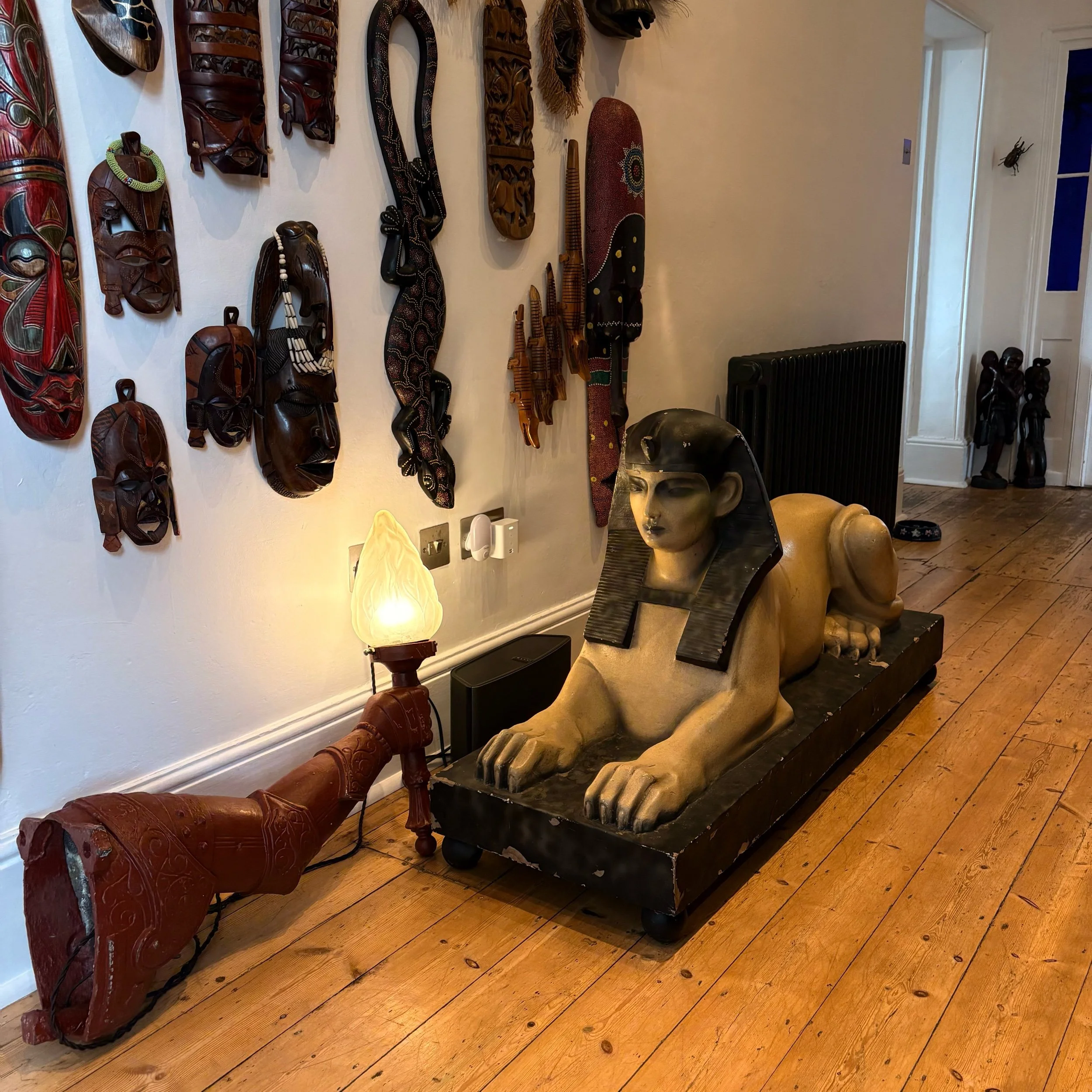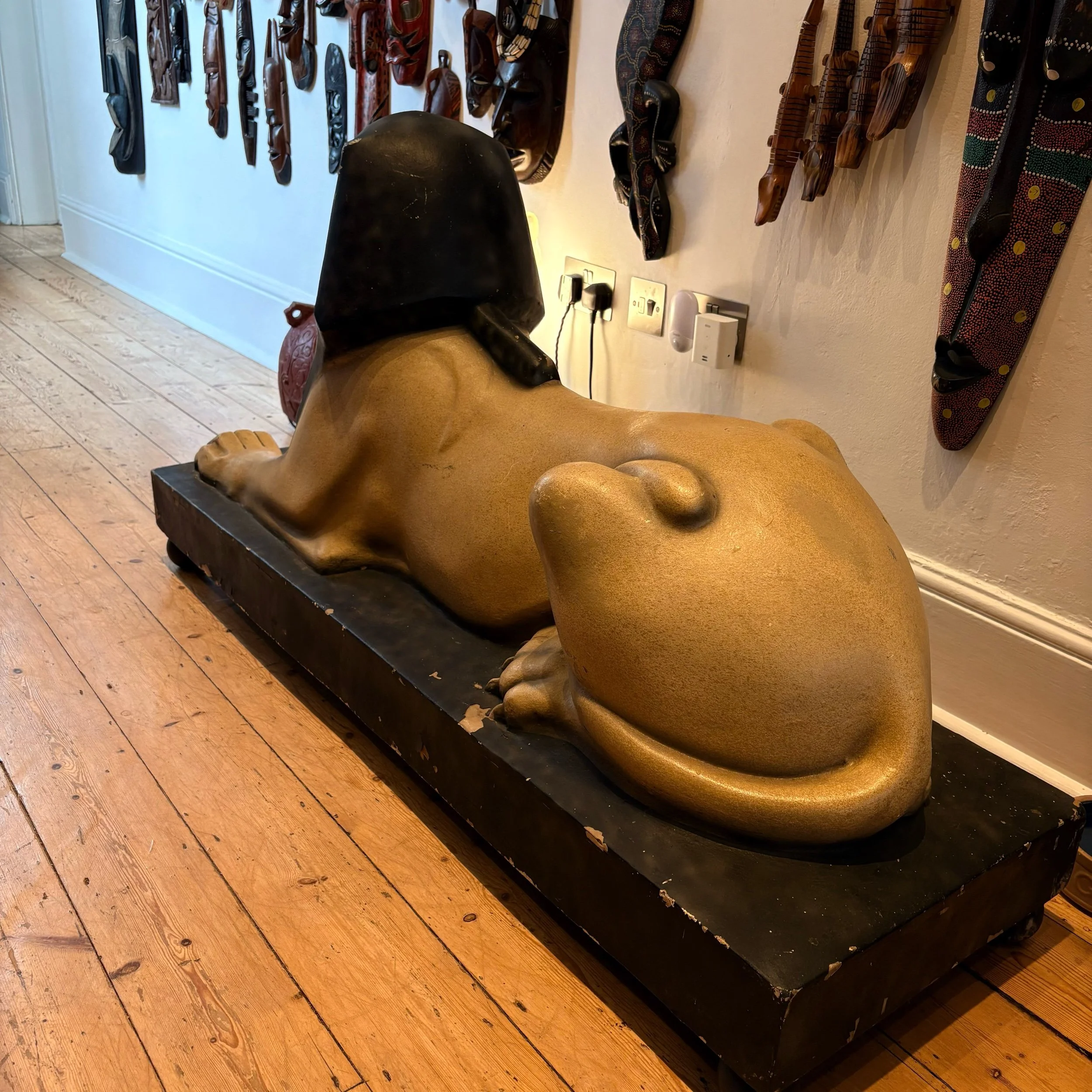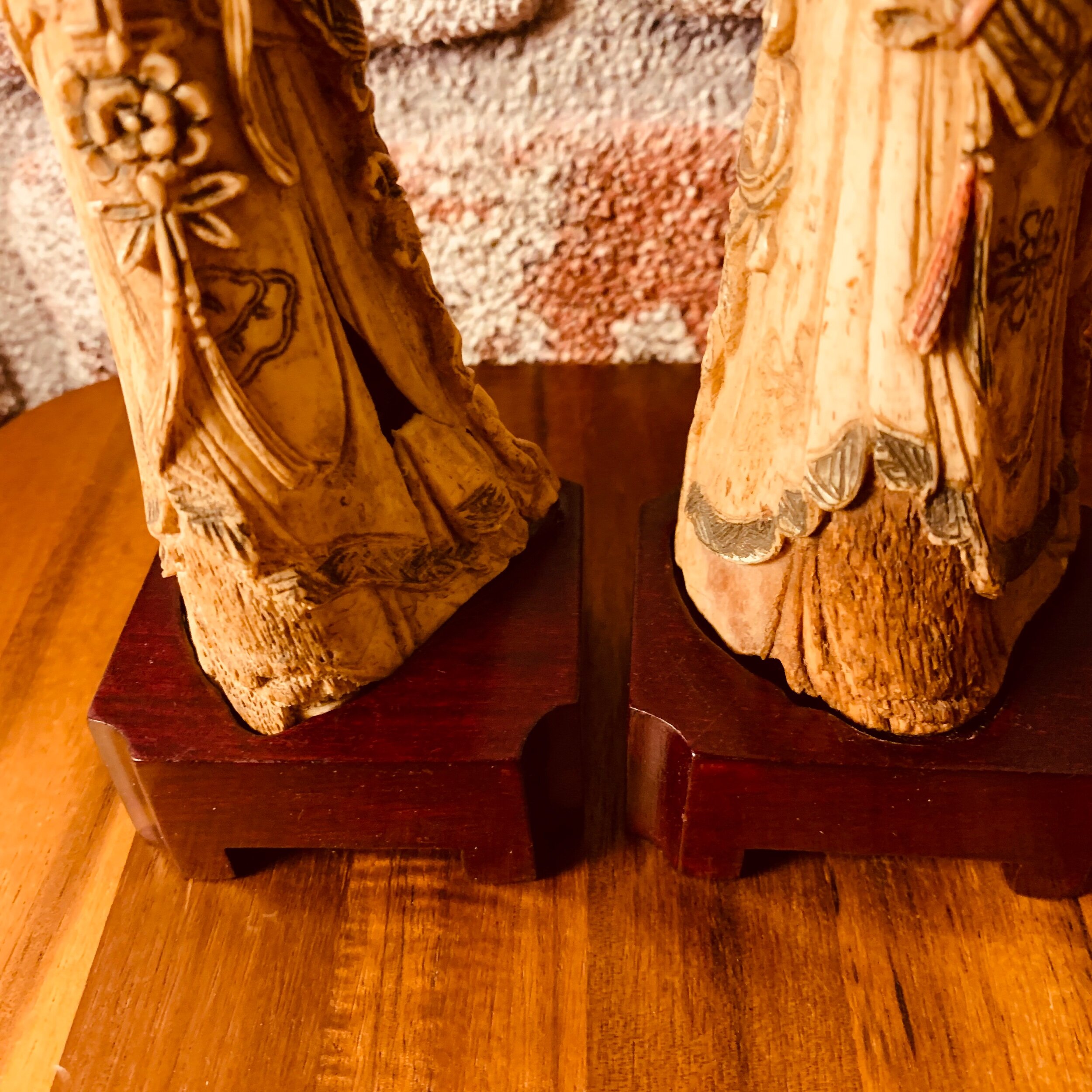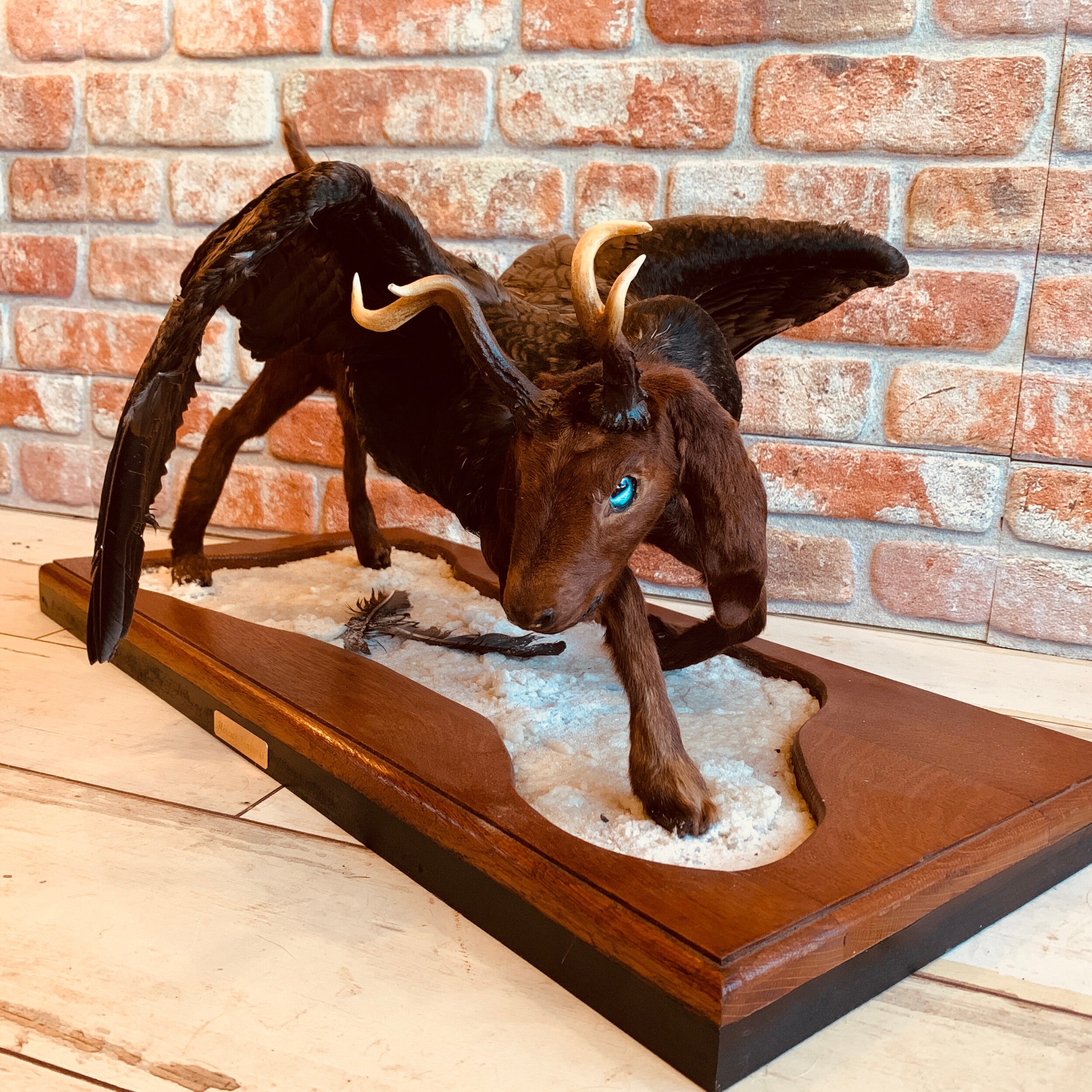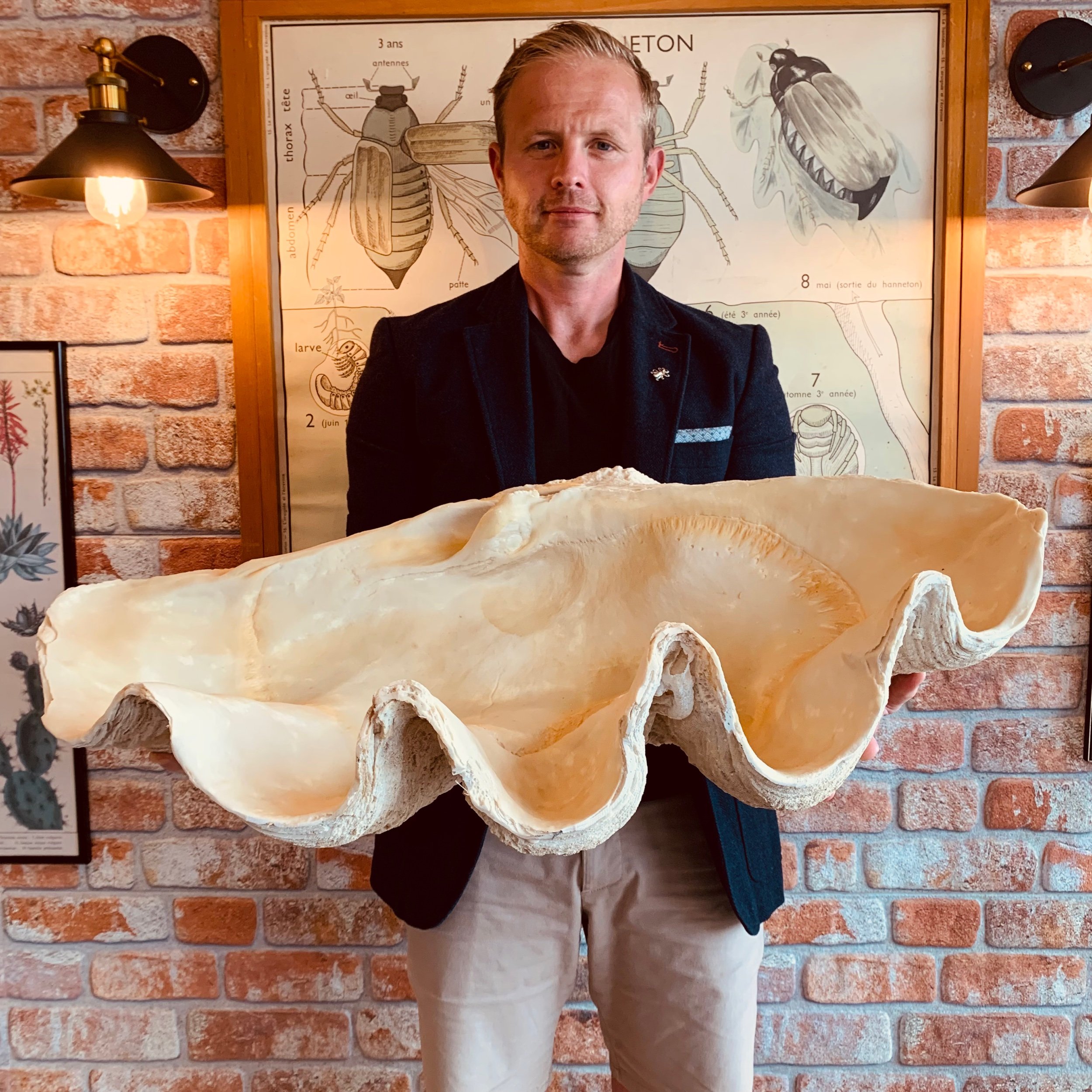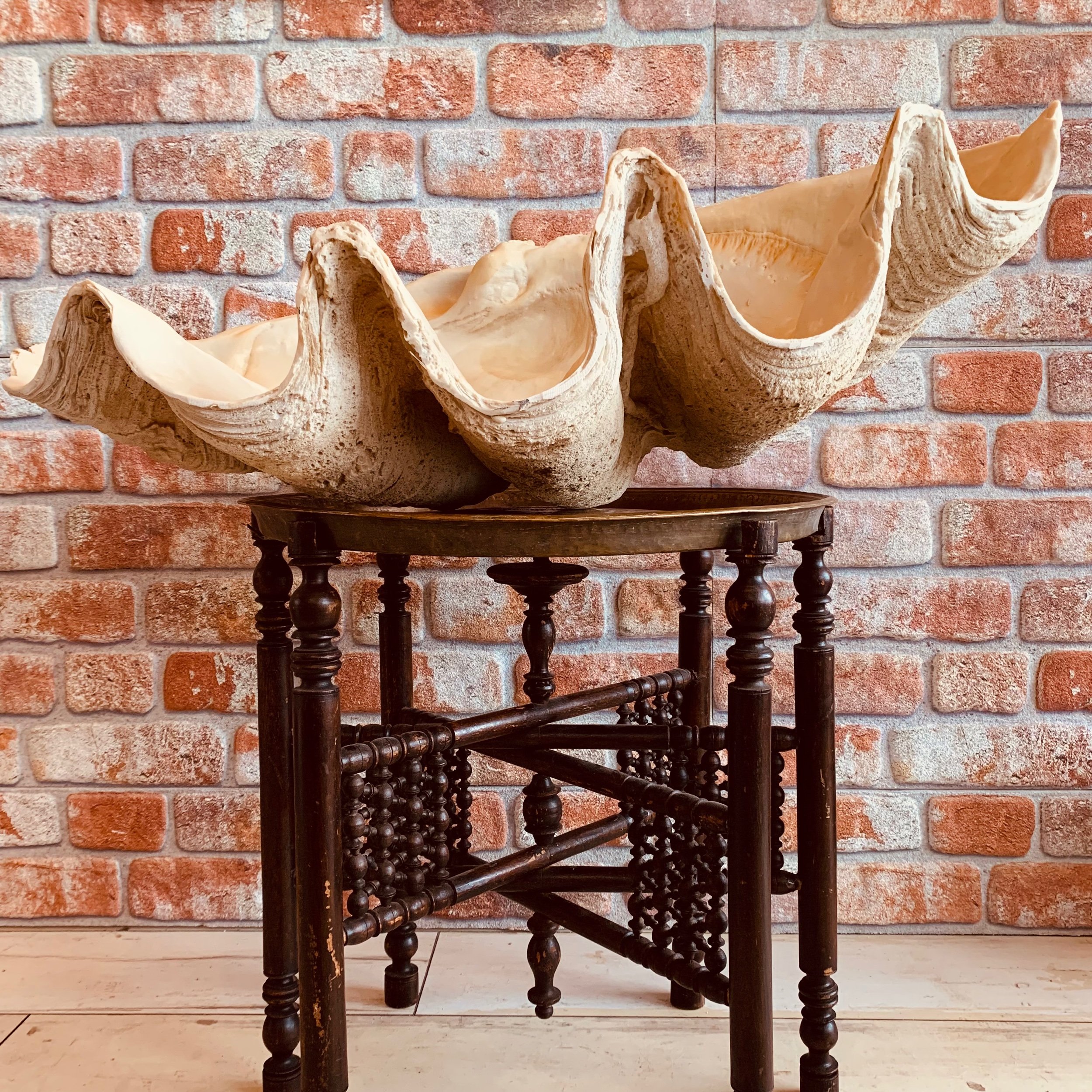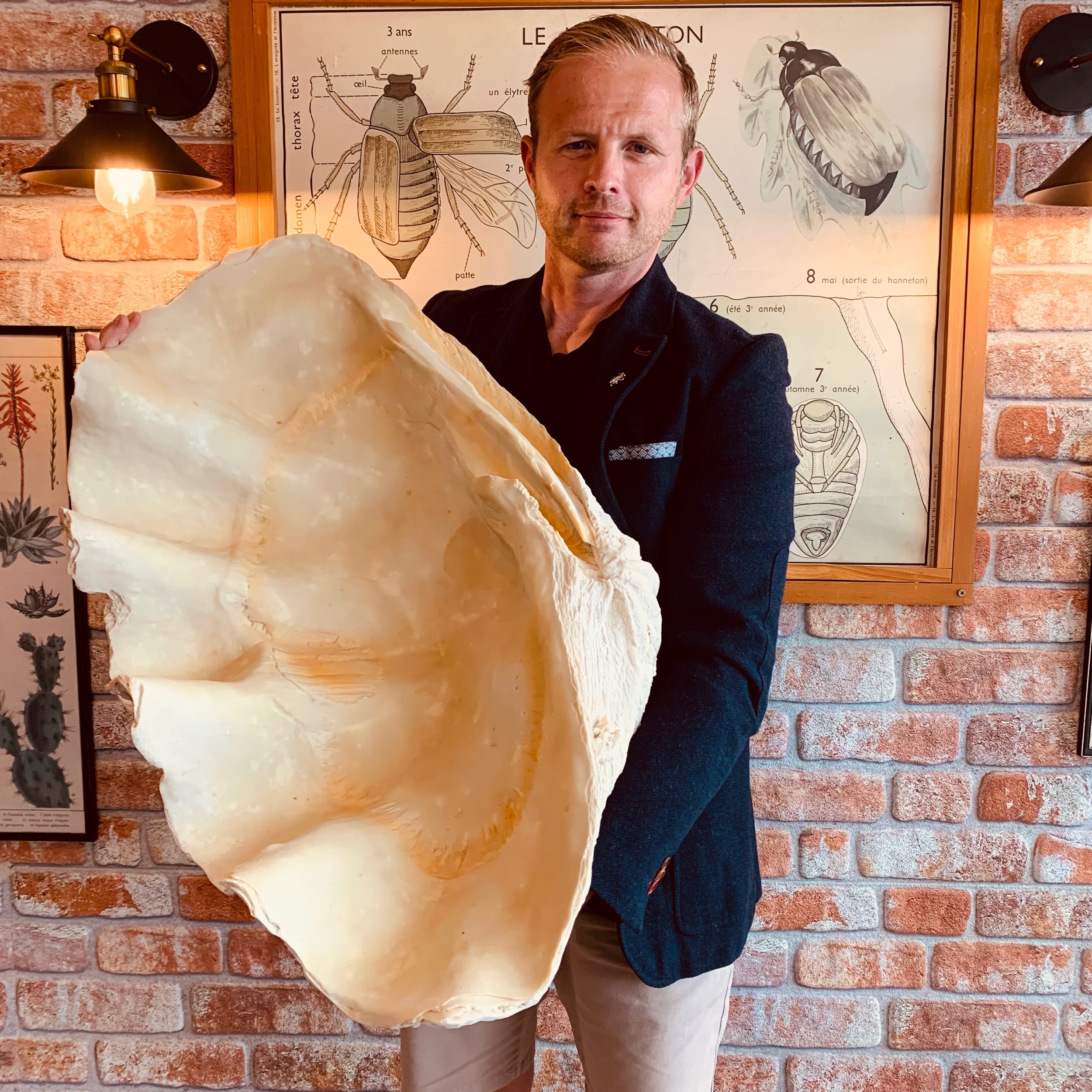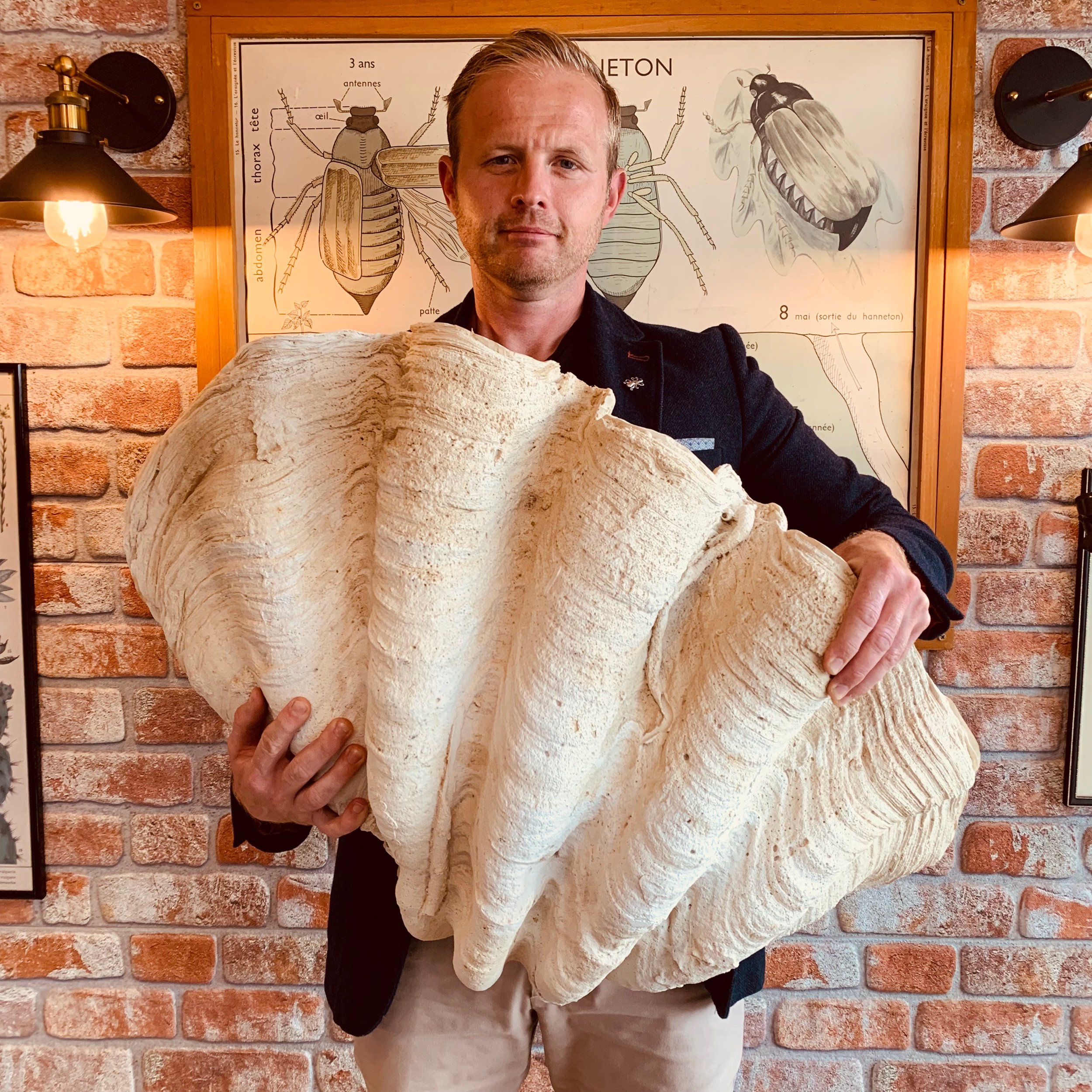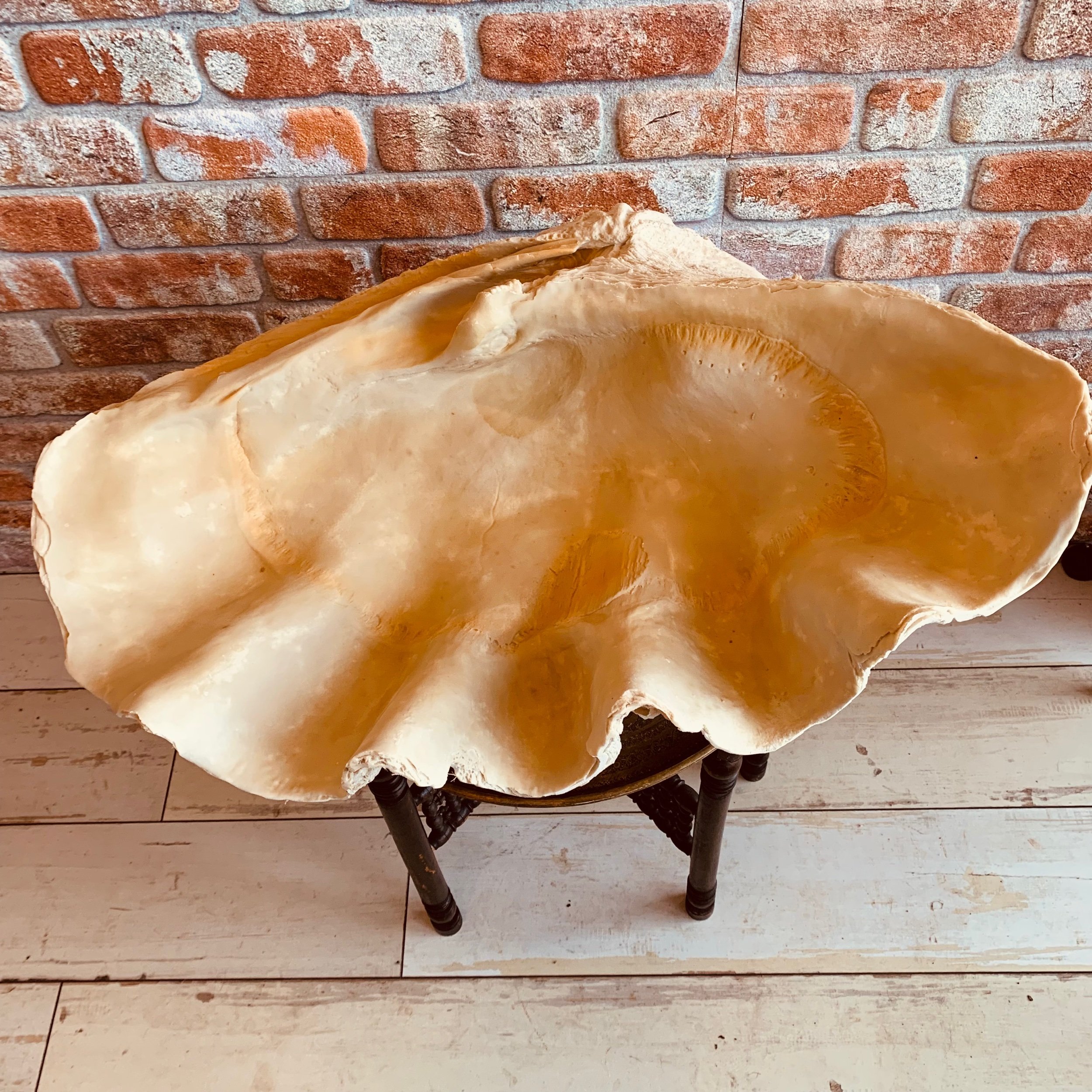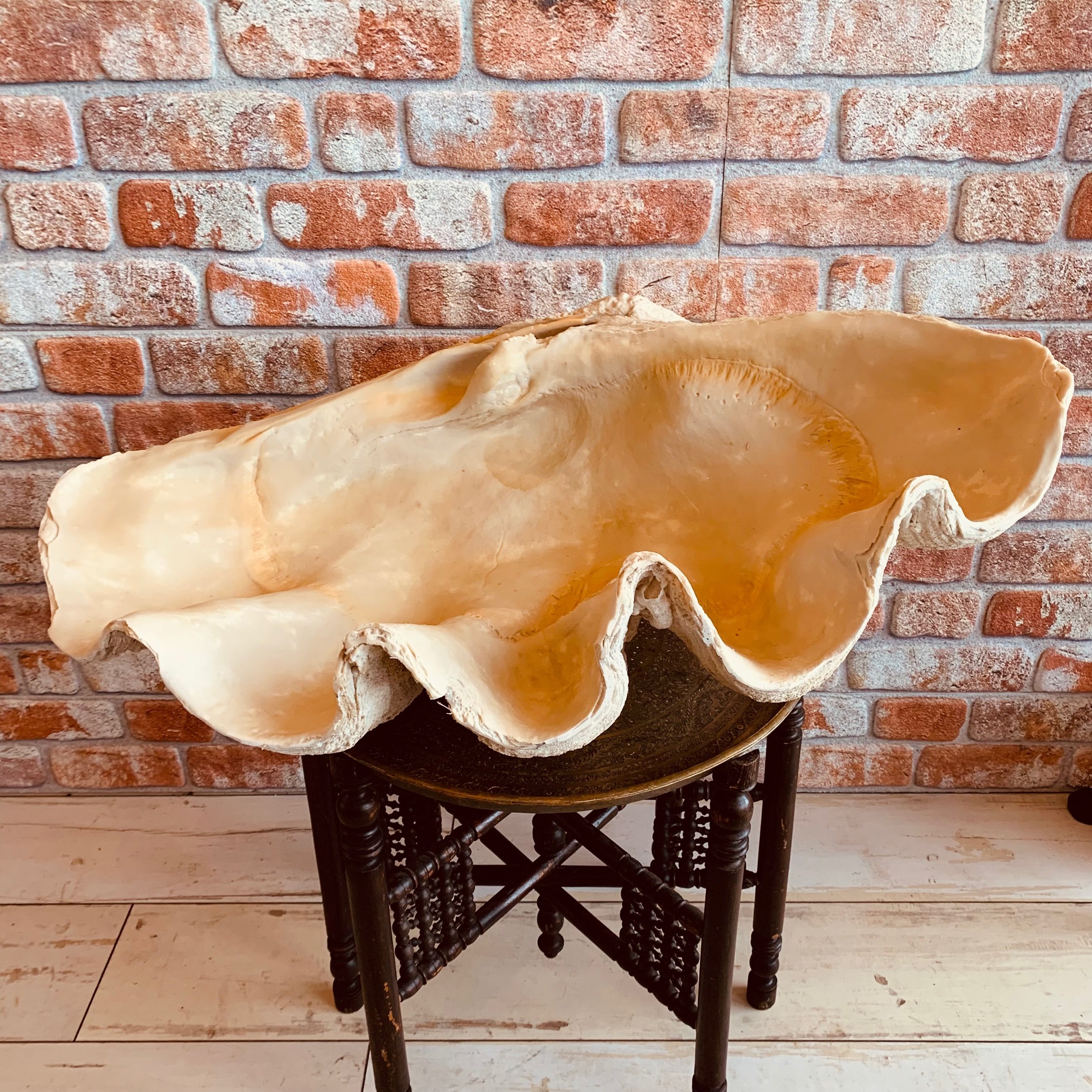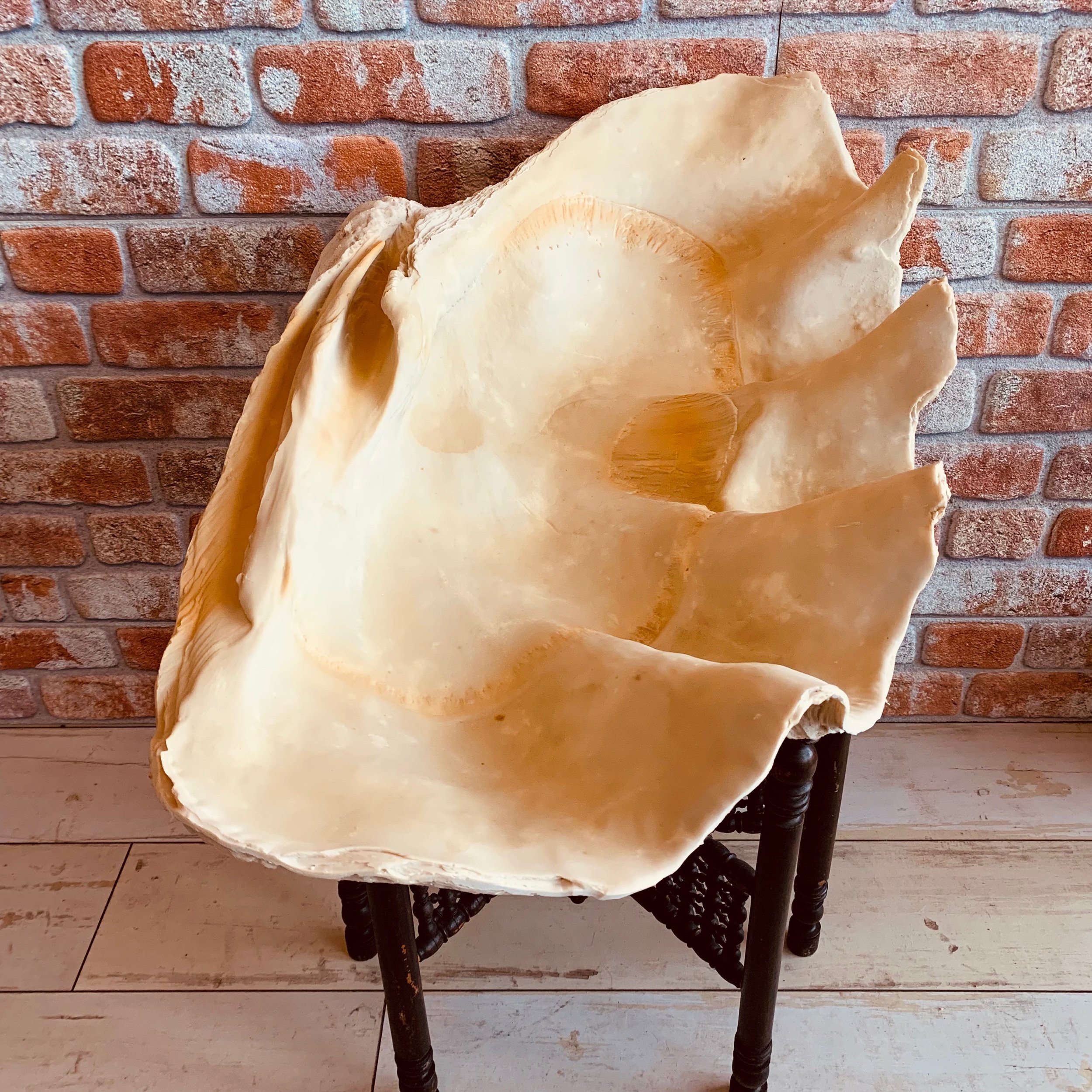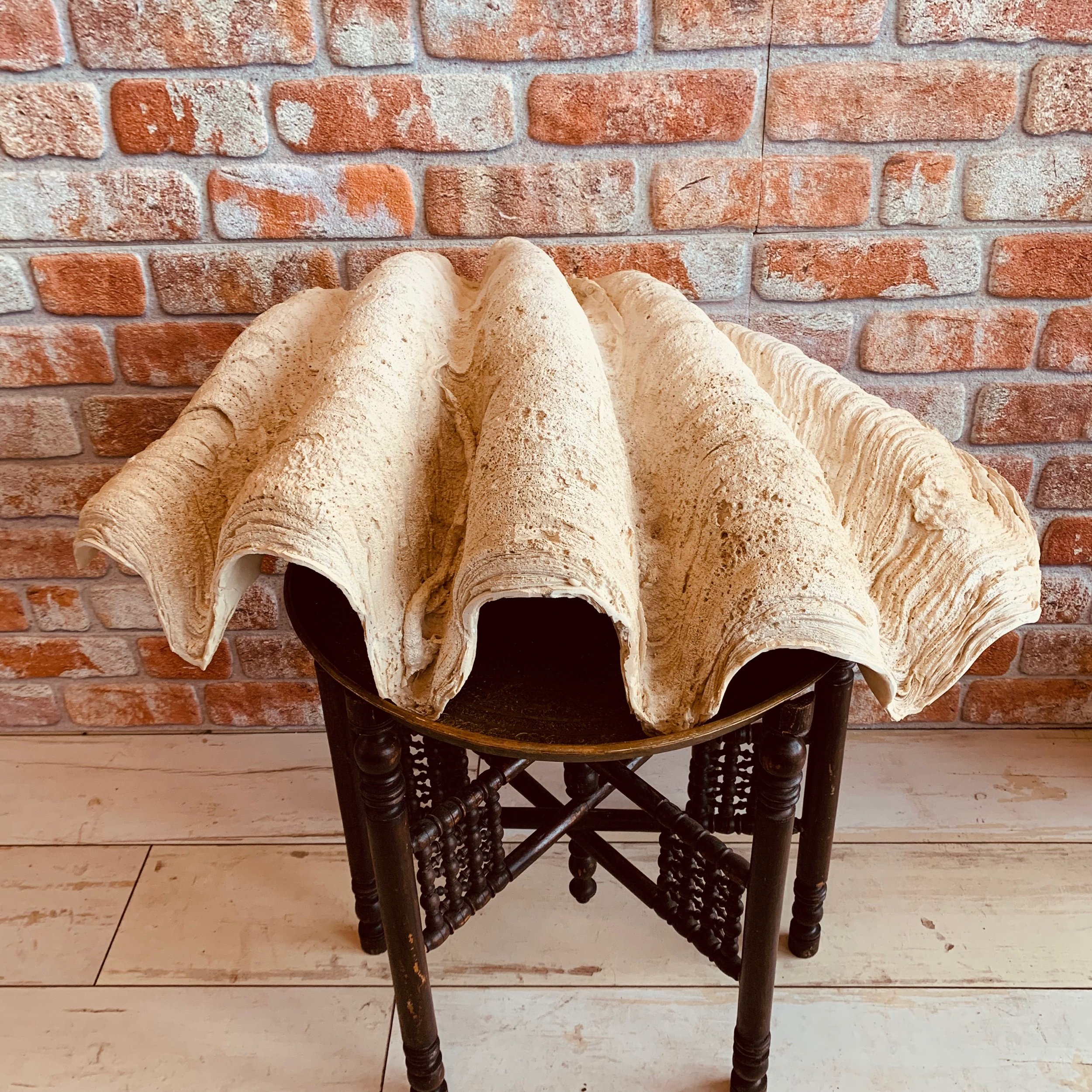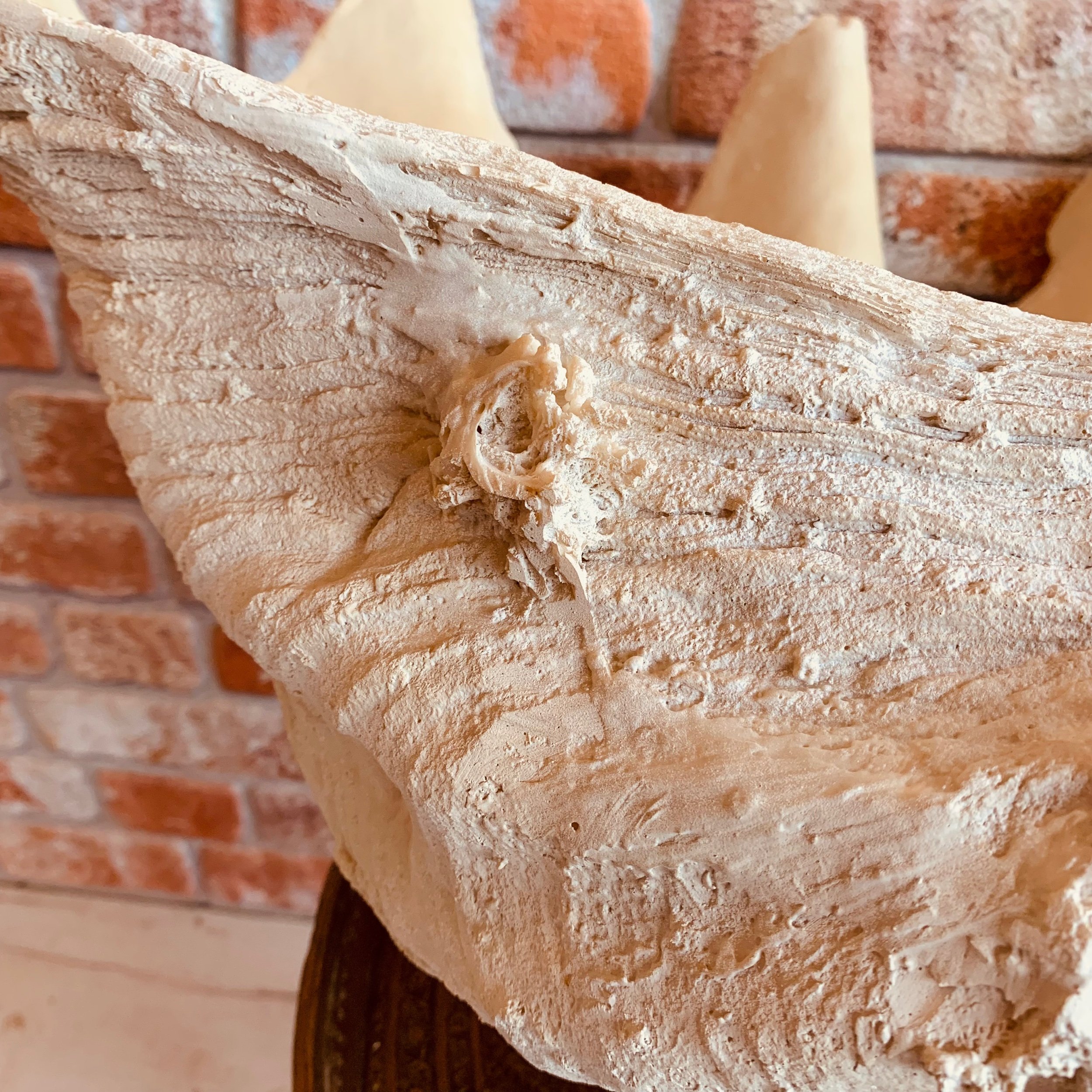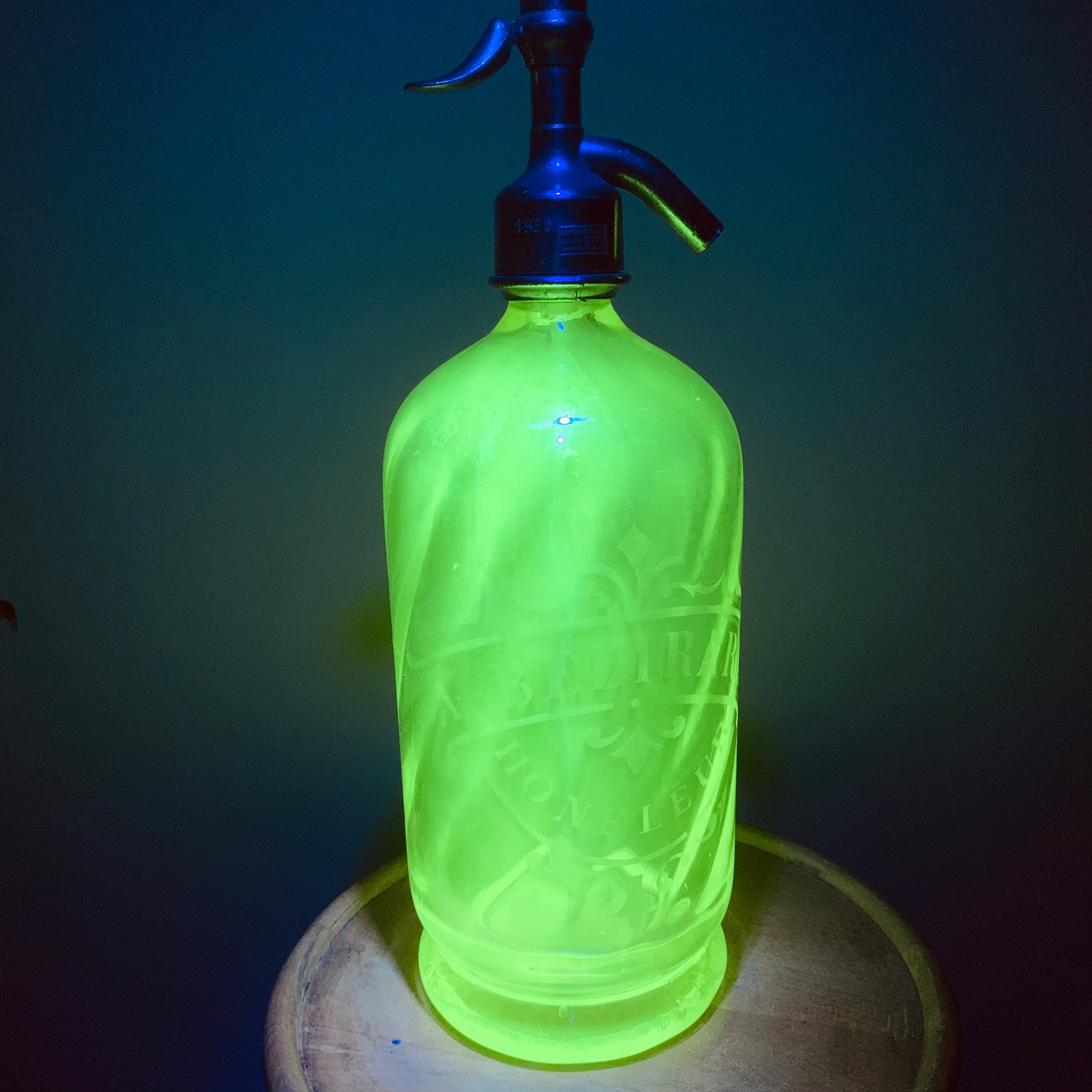 Image 1 of 7
Image 1 of 7

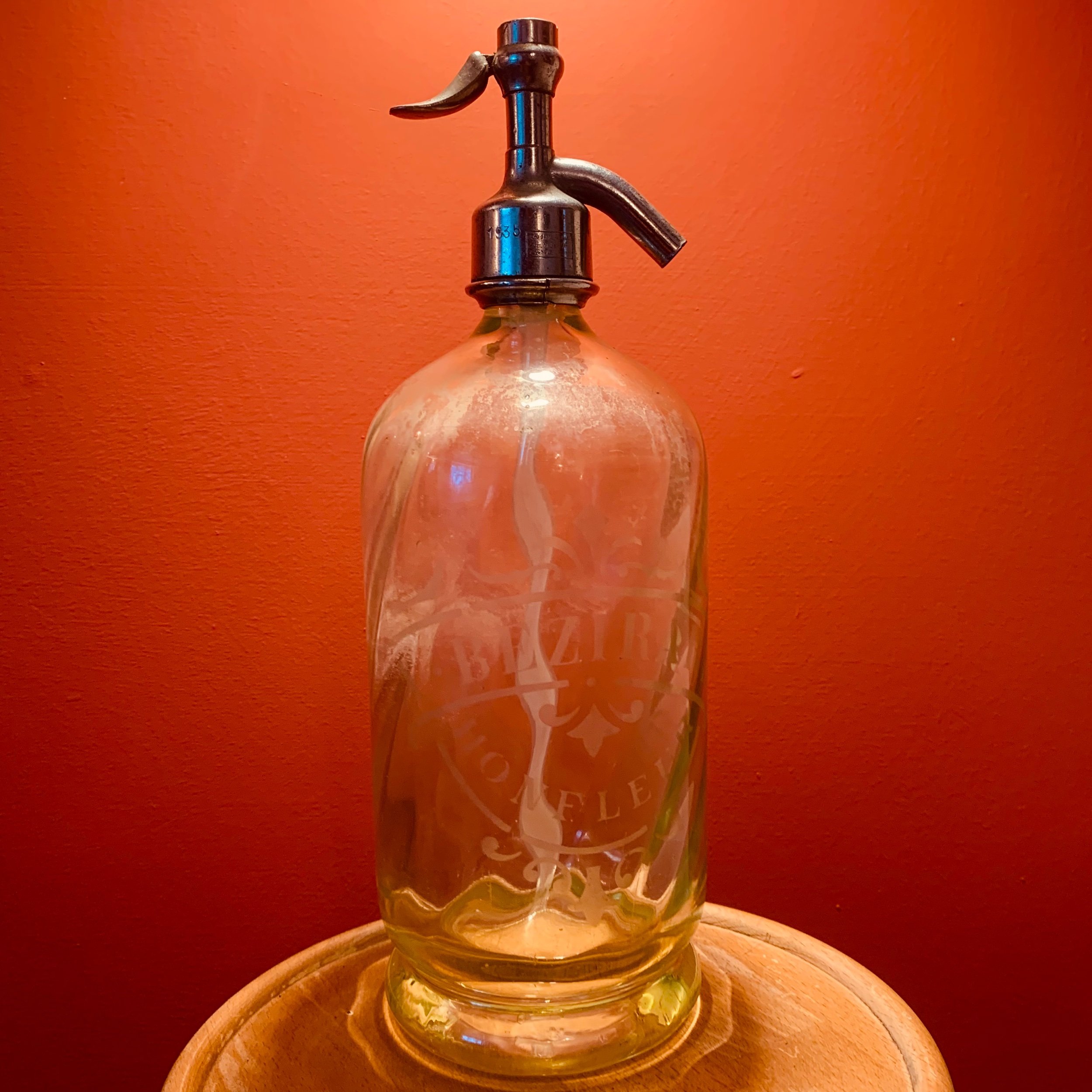 Image 2 of 7
Image 2 of 7

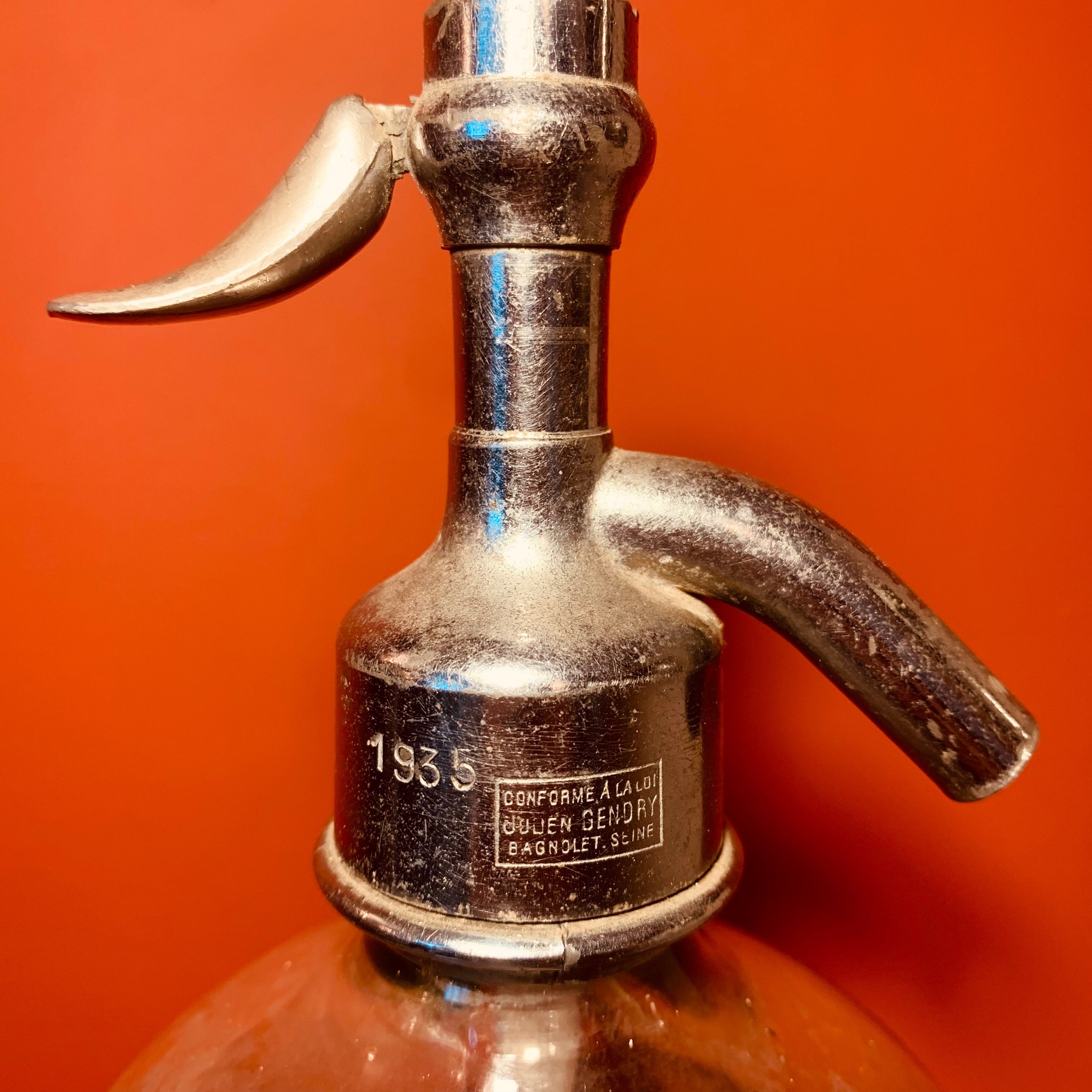 Image 3 of 7
Image 3 of 7

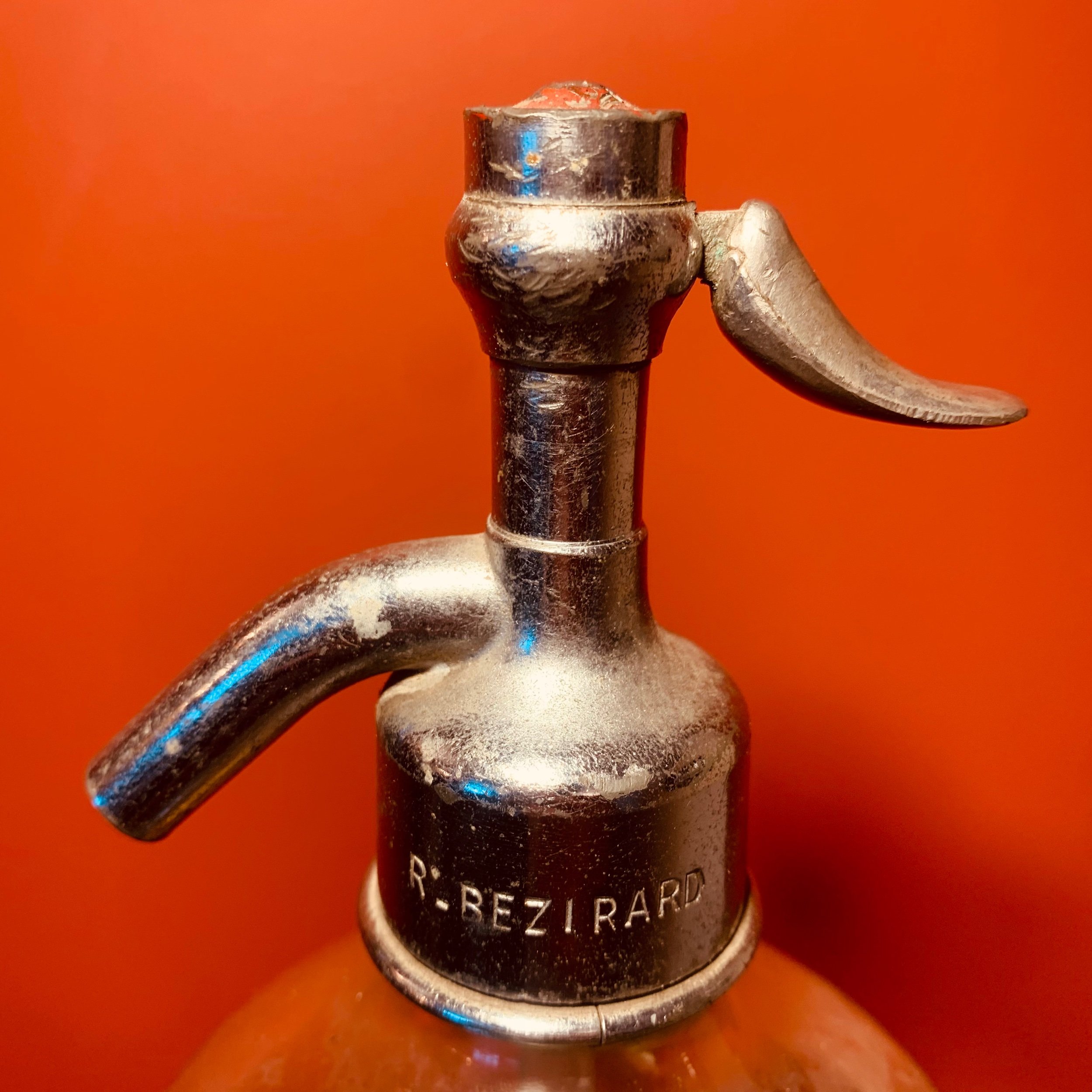 Image 4 of 7
Image 4 of 7

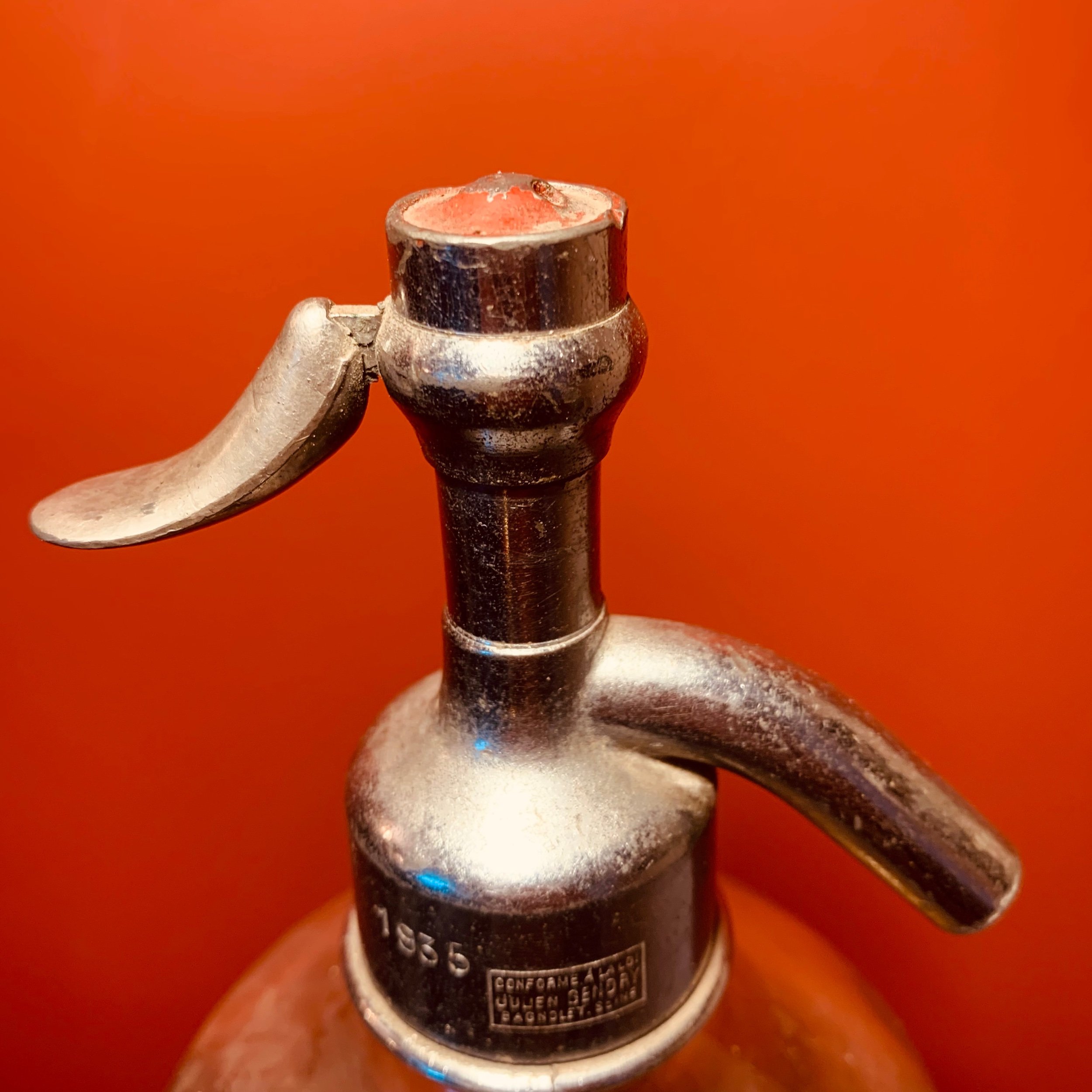 Image 5 of 7
Image 5 of 7

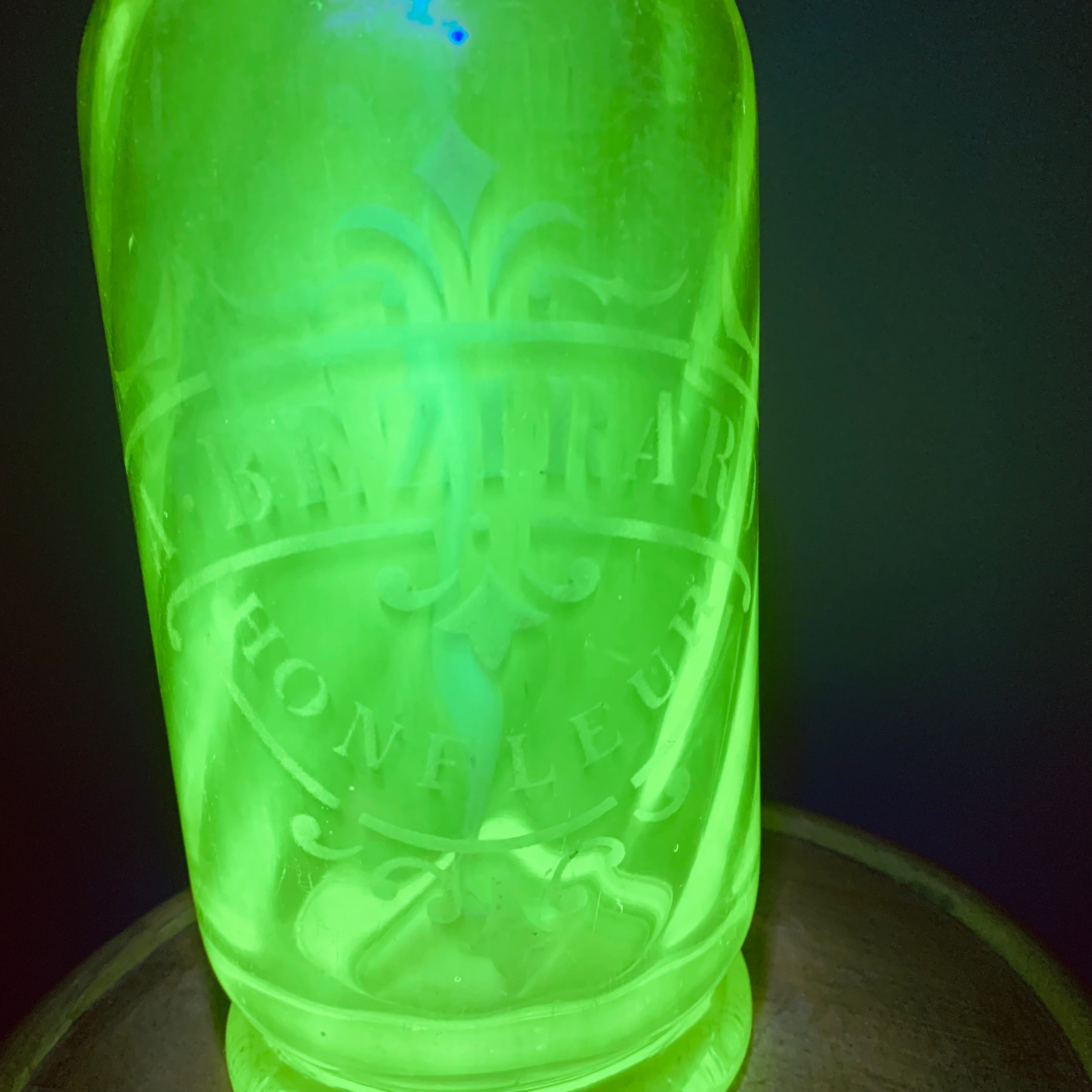 Image 6 of 7
Image 6 of 7

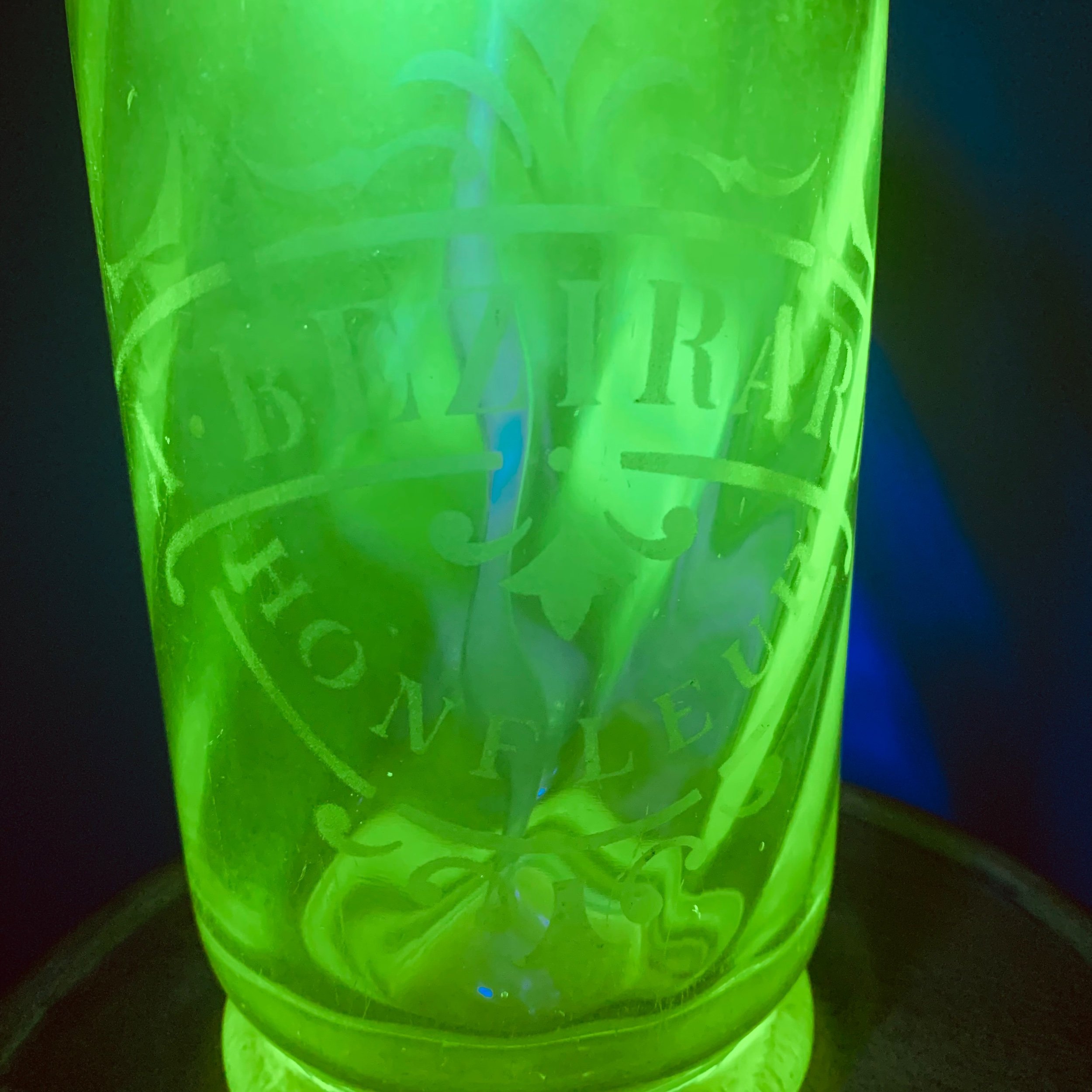 Image 7 of 7
Image 7 of 7








Uranium Glass Soda Siphon
This early to mid 20th century soda siphon from the famous Honfleur in Normandie, dated 1935.
Unusually, it was made in pale green uranium glass, also known as Vaseline glass. Other noticeable features are the separate foot and the writhen, or twisted, ribbed body.
The front panel has a large, etched design with the Bezirard, Honfleur coat of arms in the centre.
The metal cap is engraved with "R BEZIRARD" and the maker's quality mark "CONFORME A LA LOI JULIENNE GENDRY BAGNOLET SEINE"., which translates as “COMPLIANT WITH THE JULIENNE GENDRY BAGNOLET SEINE LAW”.
Uranium glass glows under bright light which is a safe chemical (not radioactive) process. It is particularly noticeable under UV light, as shown in one of our pictures. To make it, very small quantities of uranium powder was added to the glass mix. It's a practice which fell out of favour during the 1950s.
There is the usual calcification inside, and it can't really be cleaned any further. The glass siphon tube is present and appears undamaged, and the top unscrews at the collar, which divides in half.
Siphons were used globally in cafes, bars and hotels throughout the 20th century. They were designed to be reusable and tended to have a very hard life.
They were made in very large numbers, but branded in far more limited numbers to carry the supplier's or customer's branding.
This early to mid 20th century soda siphon from the famous Honfleur in Normandie, dated 1935.
Unusually, it was made in pale green uranium glass, also known as Vaseline glass. Other noticeable features are the separate foot and the writhen, or twisted, ribbed body.
The front panel has a large, etched design with the Bezirard, Honfleur coat of arms in the centre.
The metal cap is engraved with "R BEZIRARD" and the maker's quality mark "CONFORME A LA LOI JULIENNE GENDRY BAGNOLET SEINE"., which translates as “COMPLIANT WITH THE JULIENNE GENDRY BAGNOLET SEINE LAW”.
Uranium glass glows under bright light which is a safe chemical (not radioactive) process. It is particularly noticeable under UV light, as shown in one of our pictures. To make it, very small quantities of uranium powder was added to the glass mix. It's a practice which fell out of favour during the 1950s.
There is the usual calcification inside, and it can't really be cleaned any further. The glass siphon tube is present and appears undamaged, and the top unscrews at the collar, which divides in half.
Siphons were used globally in cafes, bars and hotels throughout the 20th century. They were designed to be reusable and tended to have a very hard life.
They were made in very large numbers, but branded in far more limited numbers to carry the supplier's or customer's branding.


